Among the most promising renewable energy technologies stands photovoltaics (PV), a remarkably elegant method for generating on-site electricity from the sun, devoid of concerns about energy supply or environmental impact. A newer alternative is BIPV, offering a wide range of opportunities.
Future outlook
In 2022, the global market for building-integrated photovoltaics was valued at USD 19.82 billion and is projected to maintain a compound annual growth rate (CAGR) of 21.0% from 2023 to 2030. The rapid expansion of solar PV capacities across different nations, coupled with the escalating demand for renewable energy sources, is poised to propel global growth in the solar panel market. Awareness is increasing regarding energy security and self-sufficiency, along with favorable governmental regulations and the commitment of countries. For instance, Germany, Italy, France, the UK, the U.S., China, Japan, and India. Commitment is also expected to catalyze market expansion in the upcoming years.
Advantages of BIPV systems
A Building Integrated Photovoltaics (BIPV) system involves seamlessly integrating photovoltaic modules into the building envelope, encompassing the roof, pavement, facade or other parts. By serving as both a building envelope material and a power generator, BIPV systems offer savings in materials and electricity expenses, while curbing fossil fuel usage, ozone-depleting gas emissions, and introducing architectural intrigue to structures.
While most BIPV systems connect to the utility grid, they can also function independently, so-called off-grid.
A key advantage of on-grid BIPV systems is the essentially cost-free storage system when supported by cooperative utility policies. It boasts 100% efficiency and unlimited capacity. Both the building owner and the utility gain advantages through grid connected BIPV. On-site solar electricity production is typically highest during a building’s and the utility’s peak loads, thereby reducing energy costs for the owner and aiding the utility grid during peak demand.
The key advantage of off-grid BIPV system is simple: you can reserve the produced energy, and avoid energy loss with adding energy storage to the system, This greatly increases energy independence for its owner.

The BIPV System
Building Integrated Photovoltaics (BIPV) refers to the seamless integration of photovoltaics (PV) into the building envelope. These PV modules serve a dual purpose as a building skin, replacing paving materials, and as a power generator. This integration bypasses conventional material costs, ultimately lowering the total costs of BIPV systems compared to PV systems that require separate dedicated mounting structures.
A comprehensive BIPV system comprises:
- PV modules (which can be transparent, semi-transparent, or opaque, using thin-film or crystalline technology);
- a charge controller, regulating power flow to and from battery storage (in stand-alone systems);
- a power storage system, often involving the utility grid in utility-interactive setups, or batteries in stand-alone configurations;
- power conversion equipment including an inverter that transforms PV module DC output into AC compatible with the utility grid;
- optional backup power sources like diesel generators (typically for stand-alone systems); and
- appropriate support, mounting hardware, wiring, and safety disconnects.
BIPV systems can interface with the utility grid or function autonomously as off-grid systems. Localized power production offers utility savings by minimizing transmission and distribution losses (termed ‘grid support’) and reduces consumer electric bills by aligning peak production with peak demand periods. Additionally, buildings generating power from renewable sources alleviate pressure on traditional utility generators, often diminishing overall emissions of climate-altering gases.
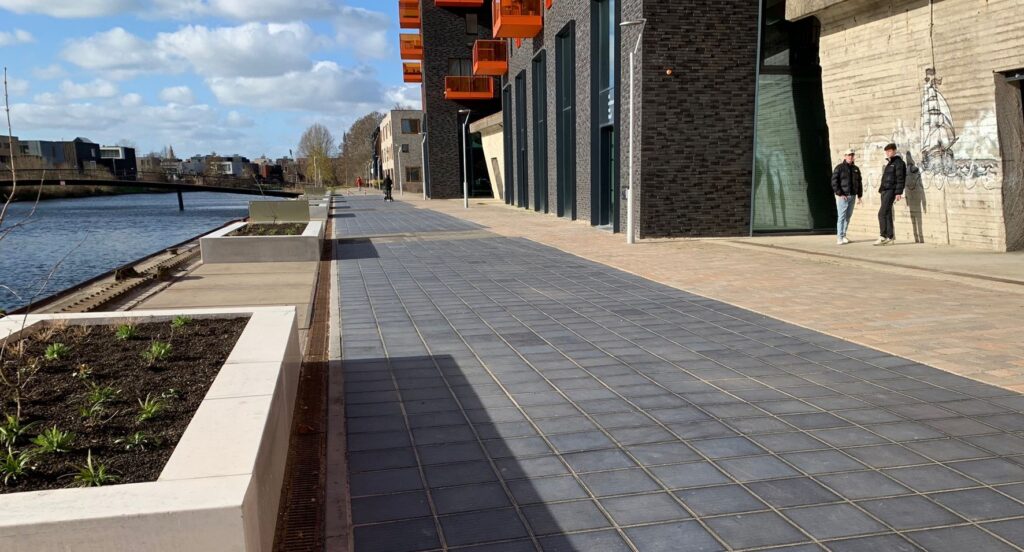
Applications
Photovoltaics can be integrated into various components within a building envelope.
Types:
- Solar paver: Solar paver tiles are walkable PV systems integrated into the built surface, including pedestrian walkways, bike paths, gardens and park areas.
- Solar roofing: Extending the concept of integrated panels, you can entirely replace conventional roofing with a solar roof. PV-integrated roofing systems serve as direct substitutes for batten and seam metal roofing.
- Solar shingles: Sleek photovoltaic (PV) sheets overlay or replace existing roof shingles.
- Solar tiles: PV units emulate standard roof tiles.
- Solar facade: Photovoltaics can be integrated into awnings and saw-tooth designs on a building facade, increasing access to direct sunlight while providing architectural benefits like passive shading.
- Solar cladding allows for the integration of solar cells into the building’s exterior, akin to solar facades.
- Solar windows: Comprising special solar glass resembling conventional tinted glass, transparent solar cells are being developed for home windows, enhancing the feasibility of power generation.
- Solar skylights: Solar-powered LED lights adjusting brightness based on captured sunlight. Utilizing PV in skylight systems offers economical PV use and intriguing design features.
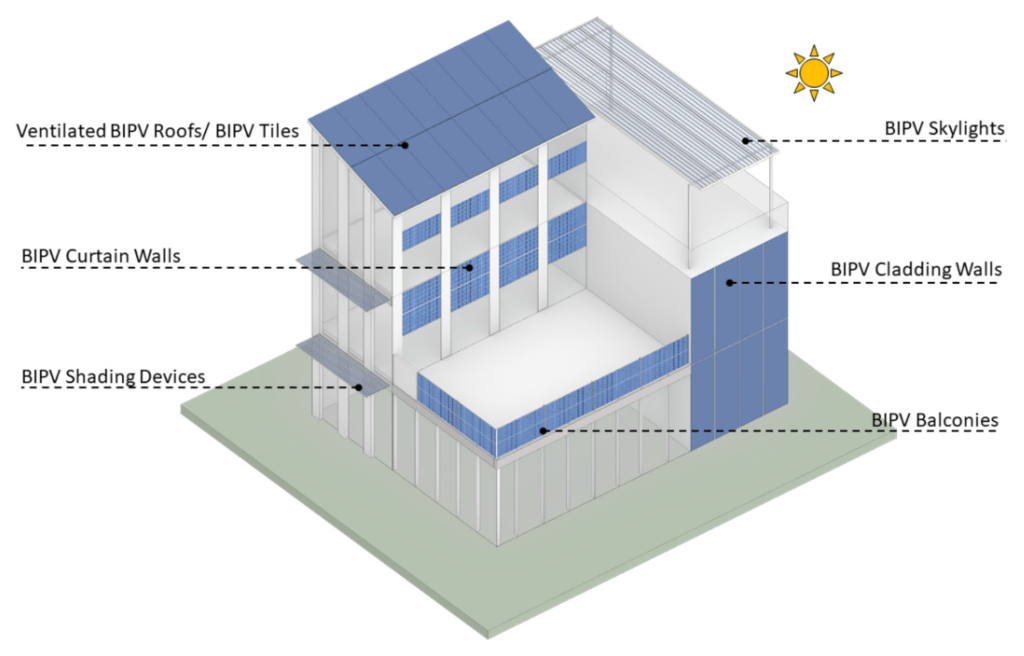
How does PLATIO fit into the BIPV scene?
A really unique and newer type of BIPV is solar pavement. The PLATIO solar pavement is an innovative, energy-generating paver with an in-built solar panel. It’s a walkable, green building material, with high-performance solar cells collecting the solar energy radiated onto the surface. The solar cells are protected by heavy-duty, anti-slip, scratch and impact-resistant glass panels. The load-bearing capacity of the walk-on solar panel surface and the protection of the cables is provided by a robust frame structure. The system operates on SELV (Low Voltage) system which ensures safe walking.
Each PLATIO paver bears the weight of max. 2 tonnes / paving tile, making it possible to walk on it, ride on it (with a bike or scooter).
For businesses
We believe that for a greener future, it is essential that businesses do their part, as they play a crucial role in the net-zero commitment by reducing the carbon footprint of their buildings. That’s where PLATIO comes in! It’s a great solution for businesses looking to power their buildings with clean energy and cutting CO2.
Your business can benefit from the ready-to-use solar solution to expand green energy supply while maintaining valuable outdoor space. By combining design, recycled materials and renewable energy, PLATIO can transform any building into a role model of sustainable architecture. It can contribute to net-zero buildings by seamlessly integrating solar energy.
Since the 1st of January 2021, according to the EU guidelines, only those newly-built buildings get occupancy permits that have almost zero energy requirements. It means that at least 25% of the building’s energy should be covered by renewable sources. PLATIO helps contribute to these guidelines as the solar pavement not only produces green energy but also saves space.
- Office buildings
- Rooftop terraces
- Parking lots
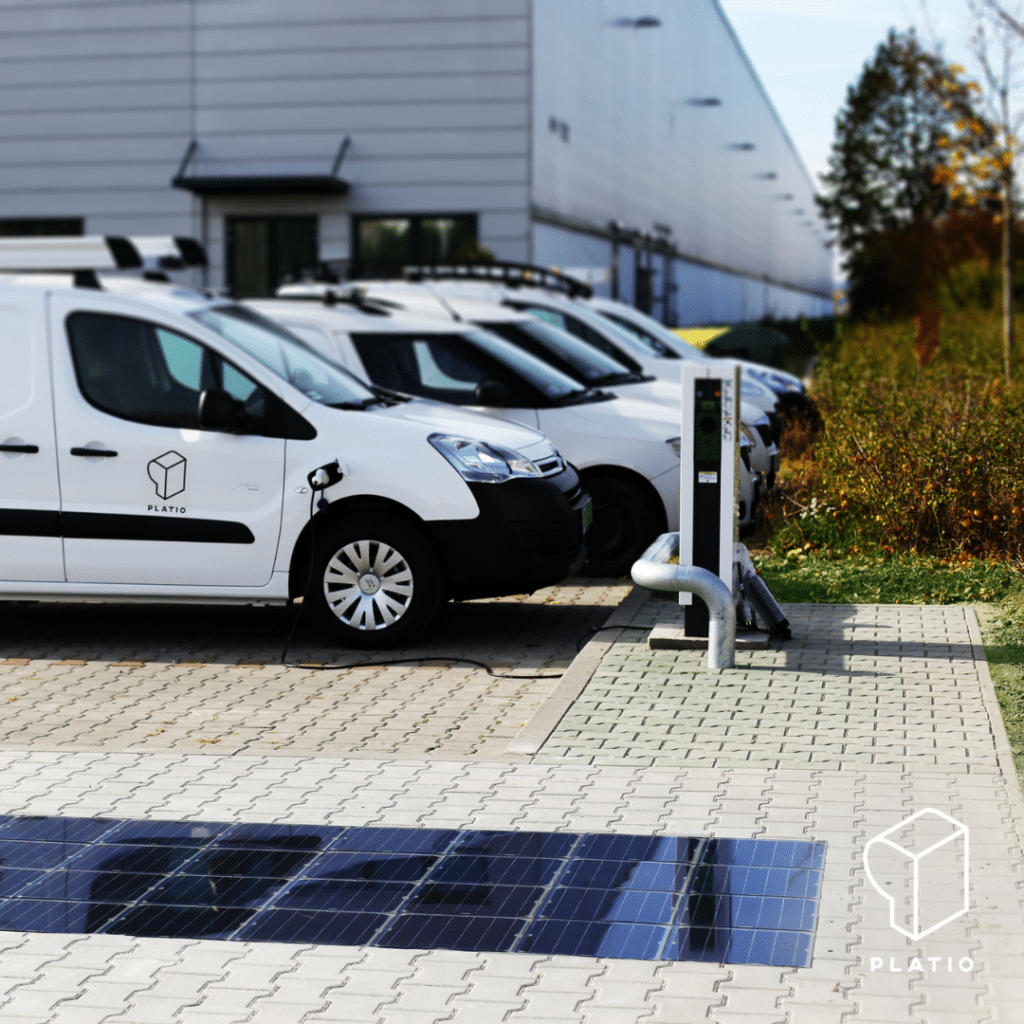

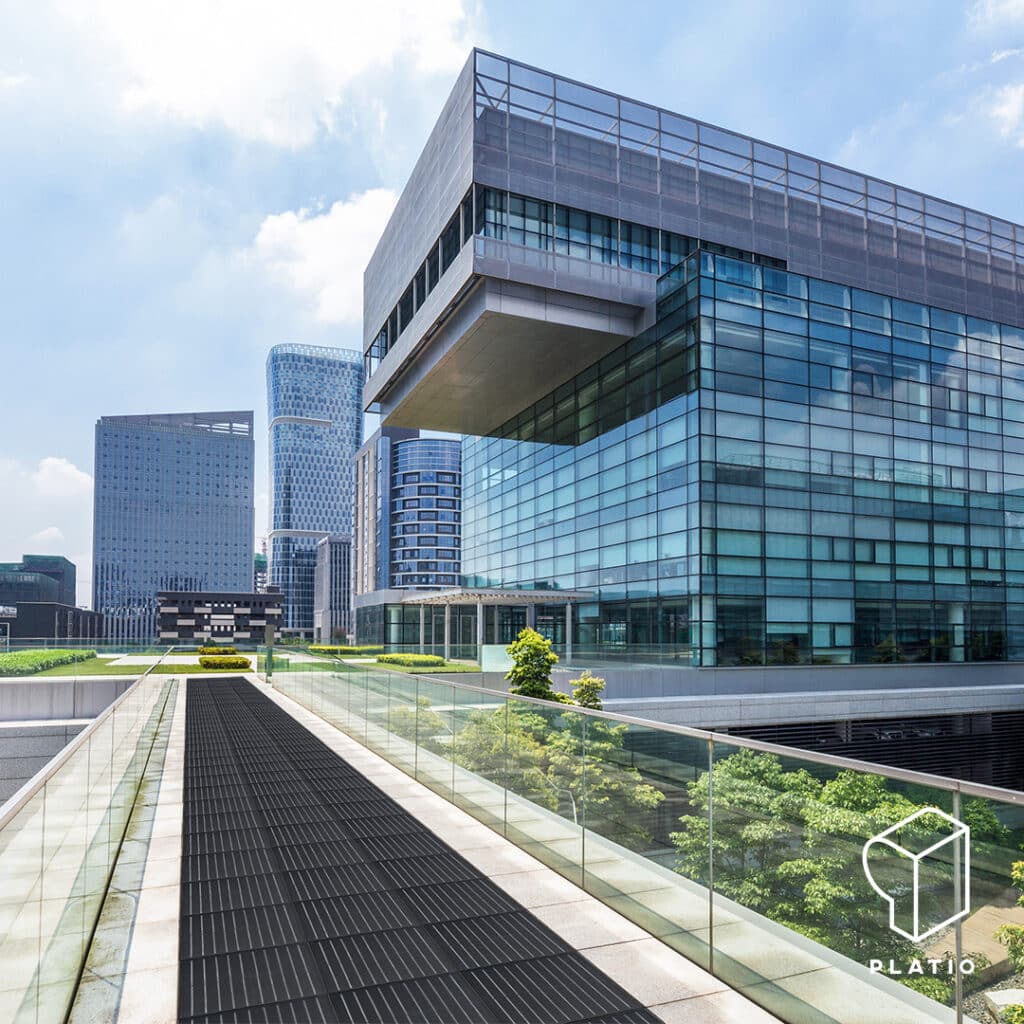
For homes
Are you a homeowner looking for clean energy sources to power the building? Solar solutions for your home can extend from conventional solar panels to solar pavement. When planning your home, you can solve the paving and the energy production of your home in one step. To achieve a net-zero building or a passive house, PLATIO can be viewed as building material, having similar lifetime and durability to concrete. But it’s not necessary to start building if you require renewable energy, the solar pavement can be installed into existing structures as well. PLATIO solar paver creates a modern and stylish look while being durable, slip-resistant, and low-maintenance.
The beauty of solar pavers is that they can be used in many different ways compared to conventional solar panels.
- Solar driveway
- Solar terrace
- Solar garden
- Solar balcony
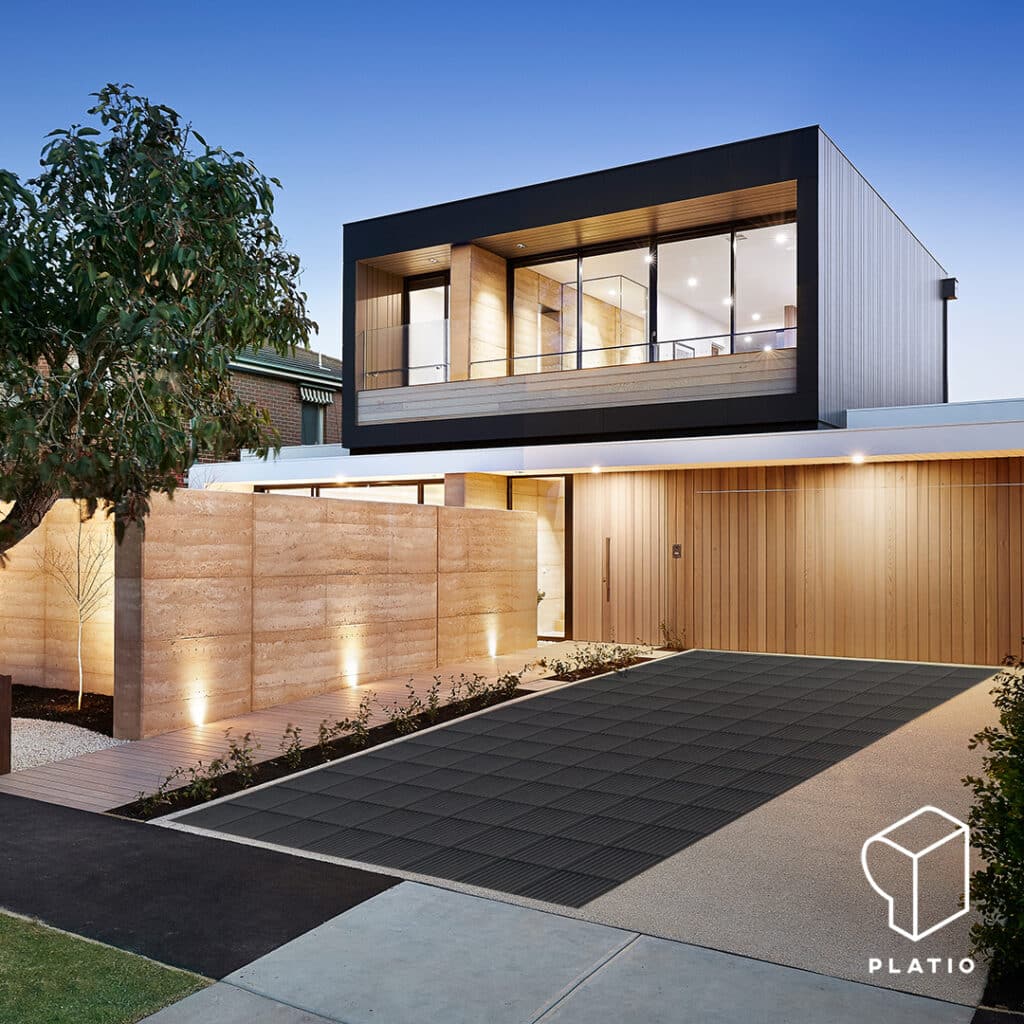
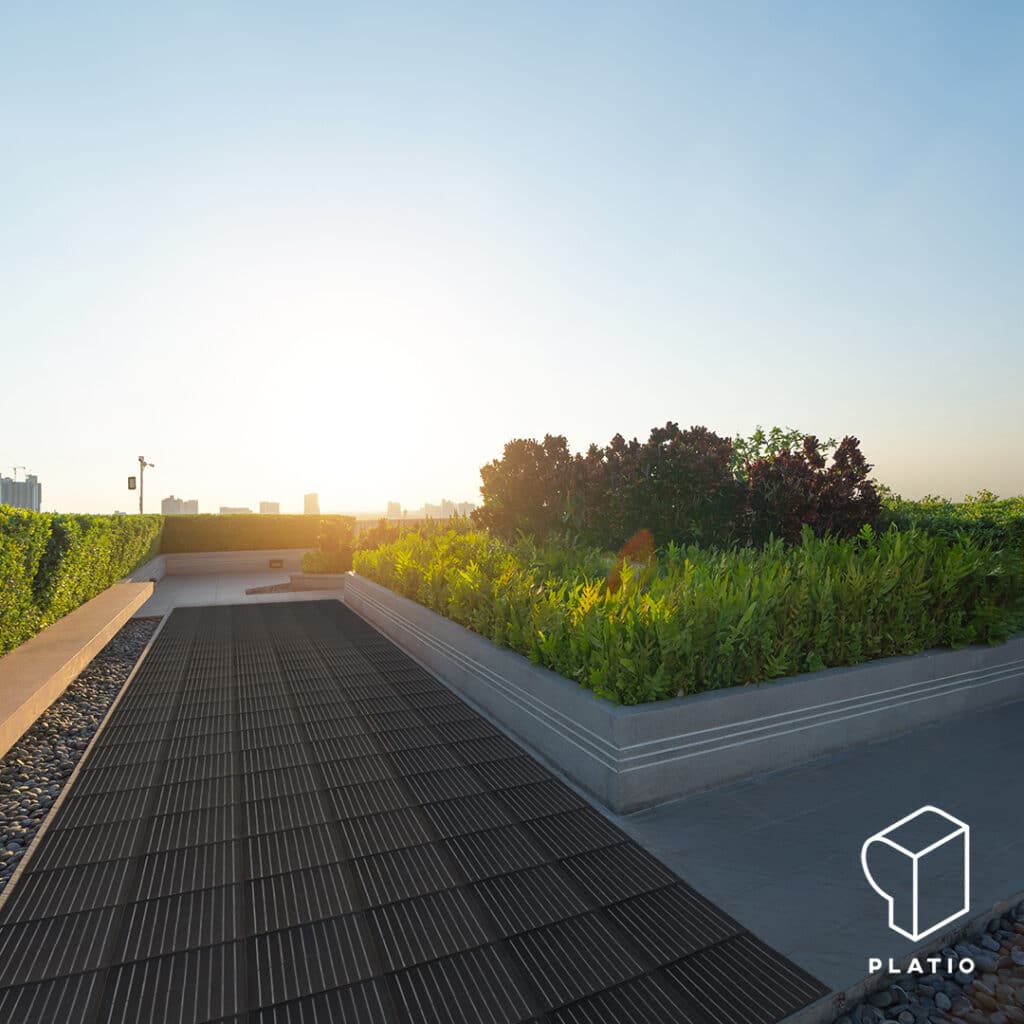
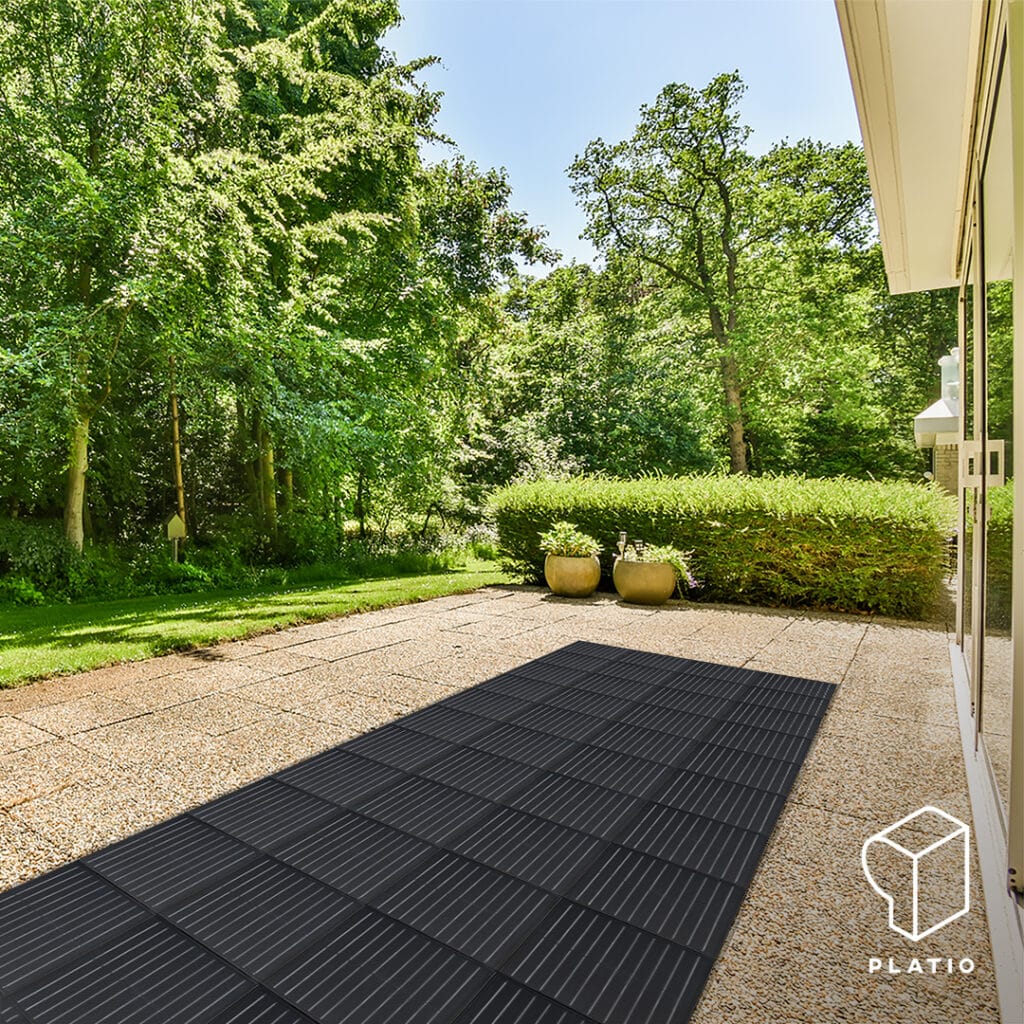
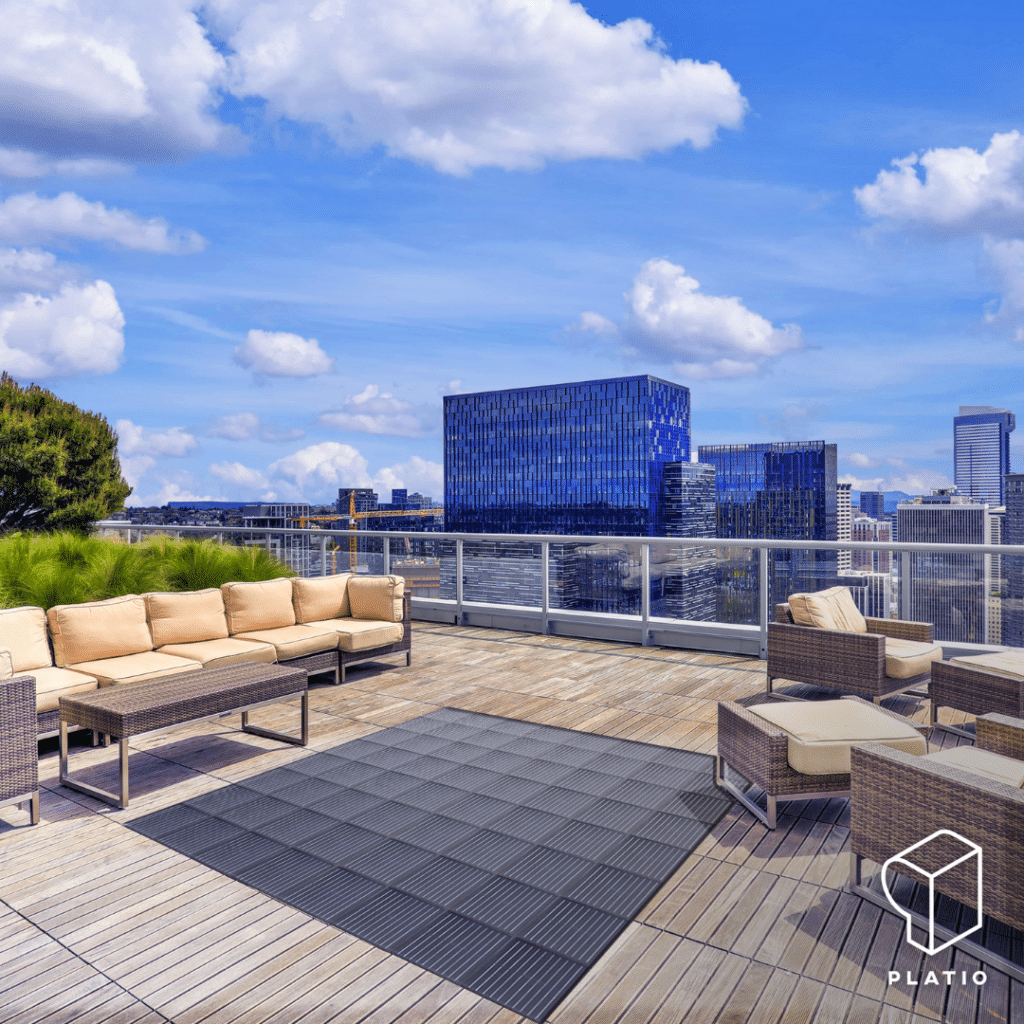
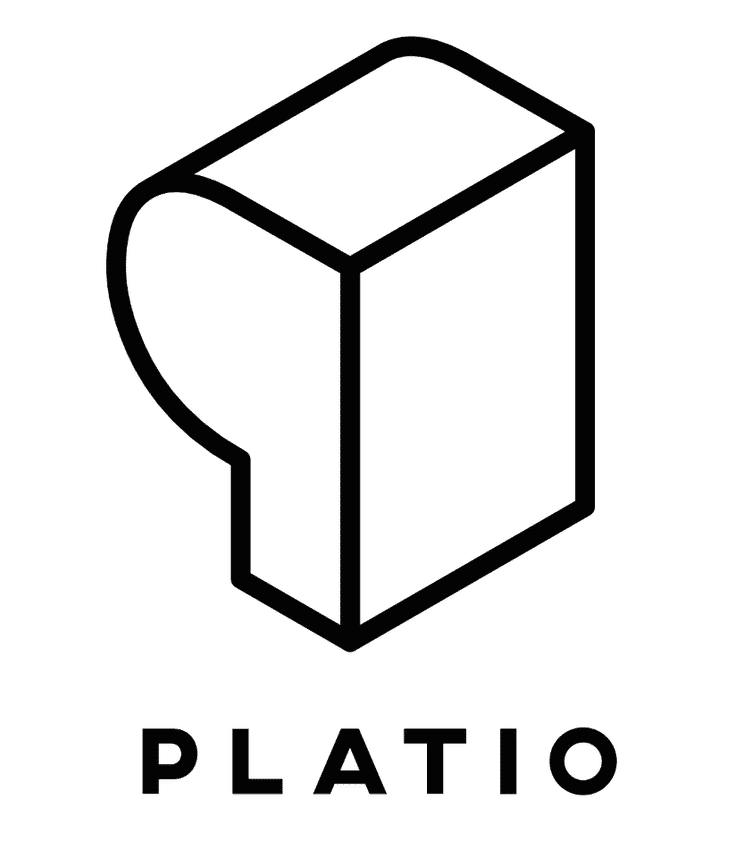
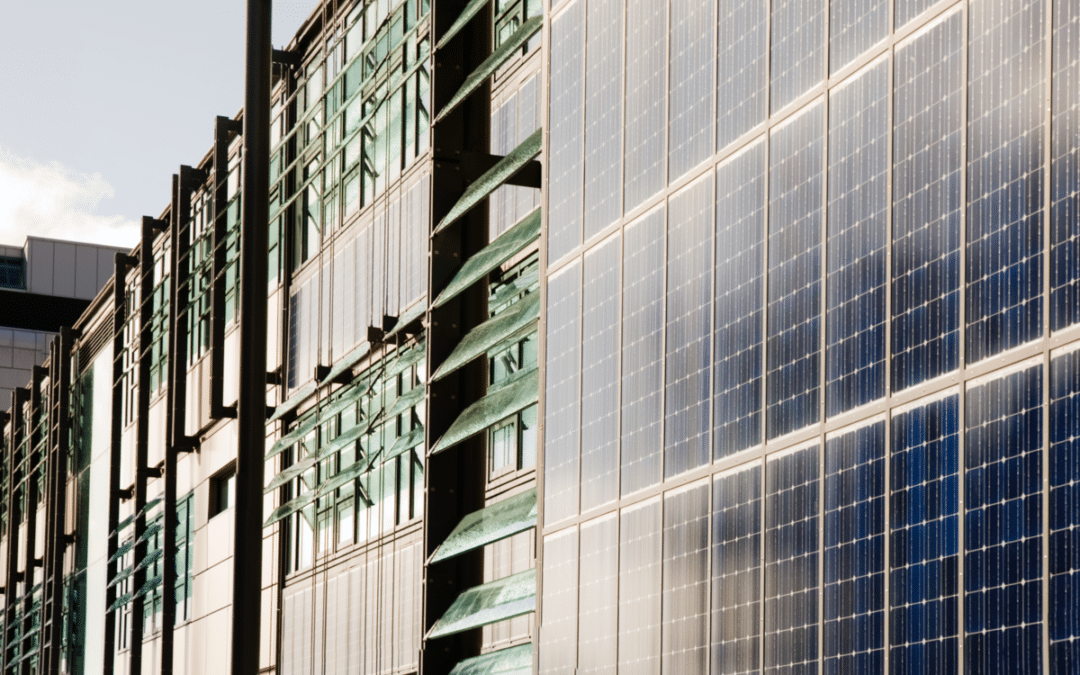

Recent Comments